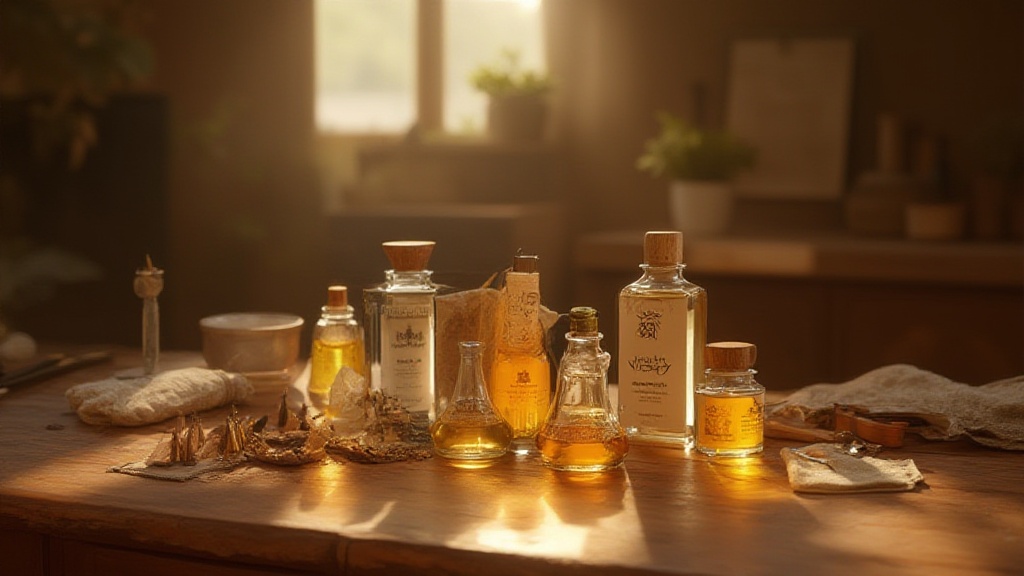Choosing the right oils for oak furniture enhances both its longevity and aesthetic appeal. These wood finishing oils not only enhance the natural wood beauty but also form a protective moisture barrier.
Danish oil, known for its deep penetration, delivers a protective finish that significantly enhances durability.
Linseed oil, with its exceptional wood preservation capabilities, brings a warm, rich hue to the surface.
Tung oil is favored for its remarkable water-resistant properties, making it an excellent choice for high-use furniture. Selecting from these options ensures that your oak pieces remain stunning through the years.
Click here to learn more about: oak furniture
Choosing The Right Wood Finishing Oils
Making an informed selection of wood finishing oils is essential for upholding the character of oak furniture.
The choice of oil impacts not just durability but also overall appearance. For example, teak oil provides a robust finish that beautifully amplifies the wood’s grain.
Here are some tips for selecting the right oil:.
- Test Different Oils: Always apply the oil on a small area first to observe how it interacts with the wood grain.
- Consider Organic Finishes: Using natural oils helps maintain a safe environment while enhancing the natural wood beauty.
- Evaluate Desired Finish: Options include matte, satin, or gloss finishes to achieve your desired sheen.
Utilizing restoration oils can revitalize aged wood, bringing a fresh look while enhancing its durability. Prioritizing these factors in your selection process guarantees a successful finish.
Aged Weathered Finishes
Aged weathered finishes evoke a sense of time-worn charm, perfect for rustic decor and vintage aesthetics. These techniques allow surfaces to mimic the natural aging process, adding authenticity to furniture and decor. Techniques may include:.
- Distressing: Imparting wear and tear to create character and depth.
- Layering: Applying multiple finishes to achieve complexity and nuance.
- Color Washing: Using diluted paint to enhance texture while allowing the grain to show through.
This approach is suitable for both DIY projects and professional craftsmanship. Consider eco-friendly products for a sustainable finish. Experimentation with different techniques can yield personalized results.
How Does Teak Oil Benefit Oak
Teak oil offers numerous advantages that elevate the longevity and aesthetic appeal of oak. The protective qualities of teak oil form a moisture-resistant barrier, serving to effectively shield oak from water damage and warping.
This protective finish is essential for maintaining the beauty of your oak furniture across various environments.
Teak oil significantly improves grain visibility, allowing the natural wood beauty to radiate.
As the oil penetrates deeply, it accentuates the intricate patterns in the oak’s surface. For optimal results, always apply teak oil in thin layers, as this facilitates better oil absorption and creates a stunning finish.
Tips for Applying Teak Oil
- Clean the surface thoroughly before applying the oil.
- Use a brush or cloth to apply in even strokes.
- Allow adequate drying time between coats for enhanced durability.
Understanding Danish Oil Application Techniques
Danish oil demands a precise application method to achieve optimal results. This oil-based finish combines oil and varnish, providing a unique balance between protection and beauty. To prevent streaks, it is essential to use a lint-free cloth during application. This technique not only ensures a smooth surface but also enhances the natural aesthetics of the wood. Allowing the oil to absorb before applying a second coat can significantly increase both durability and sheen, making the furniture more resilient. Employing effective oil application techniques is important for maintaining your oak furniture’s luster, leading to a flawless and lasting finish.
Application Best Practices
- Start with a clean and sanded surface to maximize absorption.
- Work in small sections for thorough coverage.
- Buff with a clean cloth after application to enhance sheen.
| Benefit | Teak Oil | Danish Oil |
|---|---|---|
| Moisture Resistance | Forms a moisture-resistant barrier | Provides a balanced oil and varnish finish |
| Grain Visibility | Enhances natural wood beauty | Enhances natural aesthetics |
| Application Technique | Apply in thin layers for better absorption | Use a lint-free cloth to prevent streaks |
| Durability | Improves longevity of oak furniture | Increases resilience with proper application |
Benefits Of Tung Oil For Oak Furniture
Often regarded as a premier choice among wood finishing oils, tung oil delivers outstanding benefits for oak furniture. This natural oil enhances durability, establishing a formidable protective layer that highlights the wood’s inherent beauty.
Water-resistant oil properties make tung oil particularly effective, as it penetrates deeply into the wood fibers, creating a moisture barrier that prevents warping or damage over time.
Protection and Finish
Applying multiple coats of tung oil can significantly enhance the protective finish.
Allowing sufficient curing time between coats is essential to achieve the best results.
- Improves durability
- Prevents moisture absorption
- Enhances natural wood beauty
Why Use Linseed Oil For Protection
When considering wood care products, linseed oil emerges as a highly effective option. This organic finish creates a moisture-resistant barrier, effectively protecting against wear and tear. Natural oils, like linseed oil, can deepen the color of wood over time, enriching its grain while adding visual depth.
Enhancing Color and Protection
Not only does linseed oil allow the wood to breathe, but it also preserves aesthetics while providing essential protection. To speed up the curing process, mixing linseed oil with a drier is recommended. Utilizing a soft cloth during application ensures an even finish and minimizes streaks.
“Linseed oil not only protects but enhances the natural beauty of wood. ”
Consider using these techniques for optimal results:.
- Mix linseed oil with a drier for faster curing.
- Apply evenly with a soft cloth to avoid streaks.
- Allow adequate drying time between applications for the best finish.
Tung and Linseed Oil
- Tung oil has been used for centuries in traditional woodworking due to its water-resistant properties.
- Linseed oil is derived from flax seeds and is known for its ability to enhance wood color and grain.
- Both oils provide a natural finish that allows the wood to breathe, preventing moisture buildup.
- Using a drier with linseed oil can reduce curing time significantly, making it more efficient for application.
Exploring Mineral Oil As A Wood Conditioner
Conditioning wood effectively plays an essential role in preserving its longevity. Mineral oil stands out as an excellent wood conditioner, ensuring wood retains its natural beauty while preventing it from drying out.
By applying this natural oil, the moisture barrier of the wood is enhanced, all without altering the color of the grain.
Regularly reapplying mineral oil is recommended; this not only keeps the wood nourished but also helps in preventing damage due to environmental factors.
Checking the wood’s surface for dryness can signal when it’s time for an oil application.
This practice ensures that your wooden items remain vibrant and well-maintained.
The Role of Mineral Oil in Wood Hydration
Providing hydration to wood is vital for natural wood beauty and maintaining luster. Mineral oil acts as a moisture barrier, contributing to wood rejuvenation by deeply penetrating the fibers.
This method enhances durability and prevents aging wood from becoming brittle, preserving the wood’s aesthetic appeal.
The Importance Of Scratch Resistance In Oils
Maintaining the visual appeal of your wooden surfaces requires a strong focus on the importance of scratch resistance. Scratch resistance varies significantly among different wood finishing oils, influencing the overall durability of your furniture.
For instance, oils such as tung oil and linseed oil provide differing levels of protection, which can enhance the longevity of your wood finishes.
To further bolster protection, consider using a combination of oils and other finishes.
Layering techniques can effectively create a robust barrier against scratches, ensuring that your furniture retains its charm and integrity over time.
Enhancing Durability Through Layering Techniques
Utilizing layering techniques in oil application not only enhances durability but also enriches the surface texture.
By combining varnish alternatives with traditional oils, you can achieve a more resilient finish that withstands daily wear and tear. This practice is especially beneficial in furniture maintenance as it accommodates the natural beauty while ensuring long-lasting protection.
| Aspect | Mineral Oil | Tung Oil | Linseed Oil |
|---|---|---|---|
| Moisture Barrier | Enhances wood hydration | Provides good protection | Offers moderate protection |
| Scratch Resistance | Moderate | High | Medium |
| Application Frequency | Regular reapplication recommended | Less frequent maintenance | Requires periodic touch-ups |
| Finish Aesthetic | Maintains natural beauty | Enhances grain depth | Gives a warm tone |
Enhancing Natural Wood Beauty With Revitalizing Oils
To truly showcase the allure of aged wood, revitalizing oils are essential for enriching and preserving its unique character. These penetrating oils interact deeply with the wood, enhancing its natural gloss and texture while adding depth and luster.
With regular maintenance using natural wood oils, the visual appeal of aged surfaces can be significantly prolonged, ensuring their beauty lasts for many years.
When choosing the right revitalizing oils, consider specific wood types, such as teak or oak.
This selection not only enhances the wood’s distinctive patterns but also ensures that the treatment is effective in lifting the wood’s vibrant colors.
Here are some tips for maintaining the beauty of your wood:.
- Select a suitable wood conditioner that complements your wood type.
- Apply revitalizing oils in even coats for optimal absorption.
- Use buffing oil to achieve a glossy finish when desired.
- Implement regular wood care products to keep surfaces hydrated.
Regular Application for Lasting Appeal
Maintaining luster in aged wood involves consistent application of restoration oils. By integrating these with appropriate oil application techniques, owners can effectively enhance color and protect against the elements. Here are some advantages of regular application:
- Improves oil absorption for deeper treatment.
- Creates a moisture barrier to protect against water damage.
- Supports dust repellent properties to keep surfaces cleaner.
Choosing the Right Oils
Various oil-based finishes exist to cater to your projects, including tung oil, linseed oil, and walnut oil. Each option carries its unique benefits:
- Tung oil: Known for its water-resistant properties.
- Linseed oil: Offers a matte finish that enhances grain.
- Walnut oil: Ideal for achieving a warm, rich tone.
Incorporating these products not only enhances durability but also contributes to the visual richness of the wood, allowing each piece to tell a story of time and craftsmanship.
Revitalizing Oils for Wood
- Regular use of revitalizing oils can extend the lifespan of wooden surfaces by preventing drying and cracking.
- Oils like tung and linseed provide natural water resistance, reducing the risk of damage from moisture.
- Applying wood oils enhances the natural grain and color, making the wood more visually appealing.
- Consistent maintenance with oils contributes to a cleaner surface by repelling dust and dirt.


